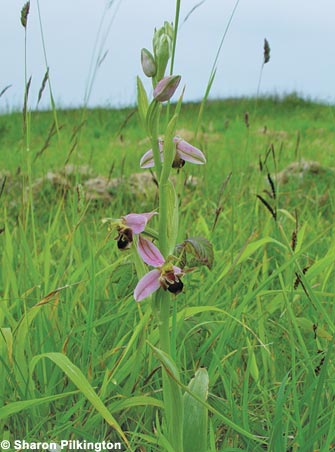
Typical Mendip habitats
Introduction | Unimproved limestone grassland | Acid dwarf-shrub heath | Ash woodland
Unimproved limestone grassland

Extensive areas of calcareous grassland are found over the thin, rocky mineral soils derived from the Carboniferous Limestone or Dolomitic Conglomerate. These are especially characteristic of the southern scarp of the Mendip Hills, in areas where abundant rocky outcrops and steep slopes have rendered cultivation impractical. Many of these areas have been grazed by sheep for centuries, and over time have developed a very rich flora. Typically, more than twenty species of plant are present per square metre of turf, and some of the richest areas may support thirty species or more. Apart from their high diversity, other striking features of these grasslands include a lack of dominant species, extensive cover of herbaceous plants, and the diminutive stature of many of the species.
Mendip limestone grasslands vary in composition, but almost invariably support a constant suite of lime-loving species, including salad burnet, small scabious, sheep's-fescue and wild thyme. Many orchids are also characteristic of unimproved limestone grassland, some commoner species including common spotted orchid, pyramidal orchid and bee orchid.
- Home
- Overview maps
- Locality
areas
- Cheddar Gorge
- Charterhouse
- Blackdown
- Burrington Combe
- Shipham & Rowberrow
- Crook Peak & Axbridge
- Banwell to Churchill
- Priddy
- Harptree & Smitham Hill
- Draycott & Westbury-sub-Mendip
- Wookey Hole & Ebbor Gorge
- Wells
- Great Elm & Vallis Vale
- Mells & the Wadbury Valley
- The Vobster area
- The Whatley area
- Torr Works & Asham Wood
- Beacon Hill
- Stoke St Michael & Oakhill
- Holwell & Nunney
- Shepton Mallet & Maesbury
- Gurney Slade & Emborough
- The Nettlebridge valley
- Geology
- Minerals and mines
- Quarrying
- Caves and karst
- Biodiversity
- Detailed site information
- Acknowledgements
- External links
- Search
- Site map